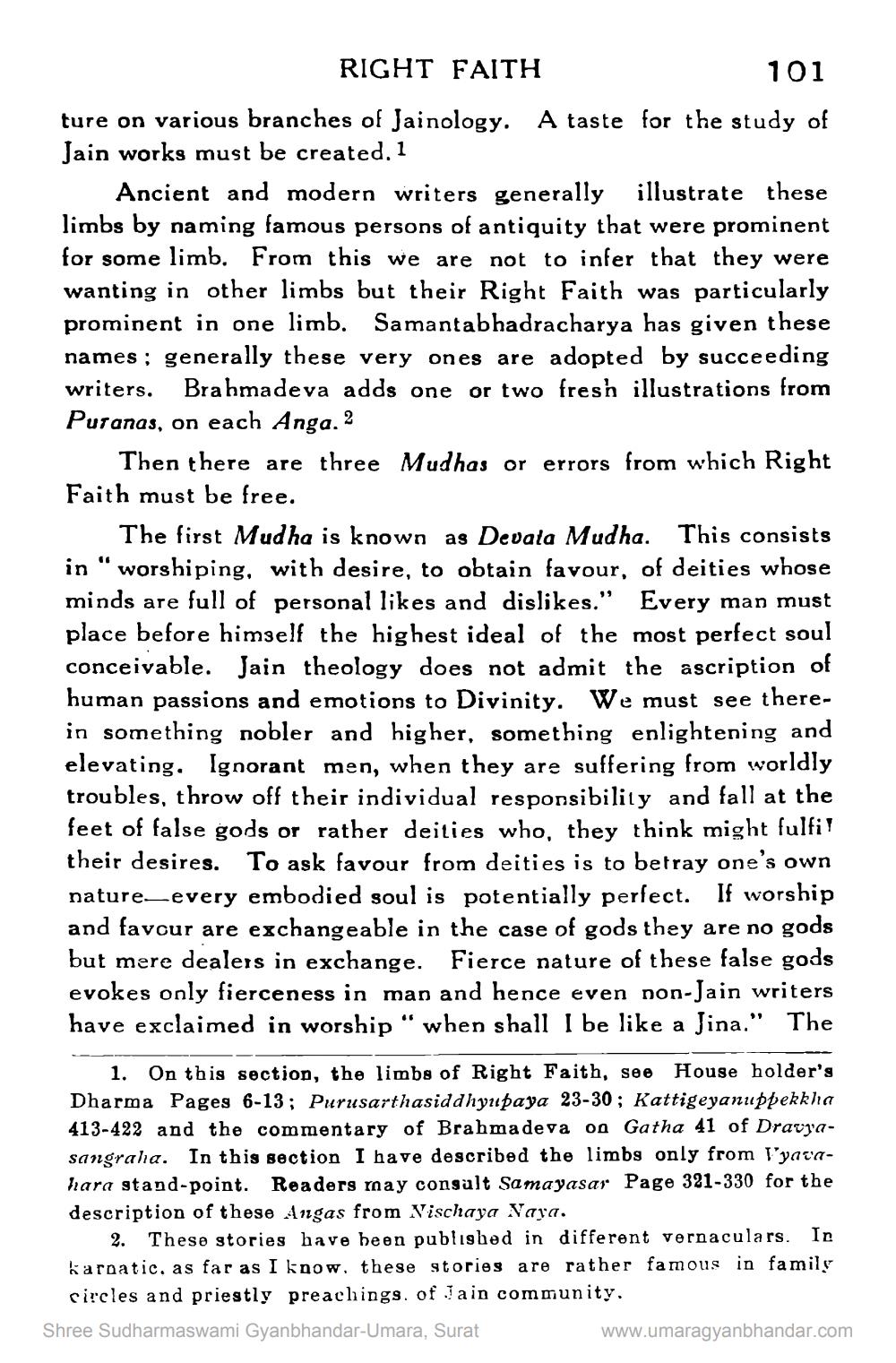________________
RIGHT FAITH
101 ture on various branches of Jainology. A taste for the study of Jain works must be created. 1
Ancient and modern writers generally illustrate these limbs by naming famous persons of antiquity that were prominent for some limb. From this we are not to infer that they were wanting in other limbs but their Right Faith was particularly prominent in one limb. Samantabhadracharya has given these names ; generally these very ones are adopted by succeeding writers. Brahmadeva adds one or two fresh illustrations from Puranas, on each Anga.?
Then there are three Mudhas or errors from which Right Faith must be free.
The first Mudha is known as Devala Mudha. This consists in "worshiping, with desire, to obtain favour, of deities whose minds are full of personal likes and dislikes." Every man must place before himself the highest ideal of the most perfect soul conceivable. Jain theology does not admit the ascription of human passions and emotions to Divinity. We must see therein something nobler and higher, something enlightening and elevating. Ignorant men, when they are suffering from worldly troubles, throw off their individual responsibility and fall at the feet of false gods or rather deities who, they think might fulfil their desires. To ask favour from deities is to betray one's own nature-every embodied soul is potentially perfect. If worship and favour are exchangeable in the case of gods they are no gods but mere dealers in exchange. Fierce nature of these false gods evokes only fierceness in man and hence even non-Jain writers have exclaimed in worship " when shall I be like a Jina." The
1. On this section, the limbs of Right Faith, see House holder's Dharma Pages 6-13; Purusarthasiddhyupaya 23-30; Kattigeyanuppekkha 413-422 and the commentary of Brahma deva on Gatha 41 of Dravyasangraha. In this section I have described the limbs only from t'yavahara stand-point. Readers may congult Samayasar Page 321-330 for the description of these Angas from Vischaya Vaya.
2. These stories have been published in different vernaculars. In karnatic, as far as I know, these stories are rather famous in family
circles and priestly preachings. of Jain community. Shree Sudharmaswami Gyanbhandar-Umara, Surat
www.umaragyanbhandar.com




